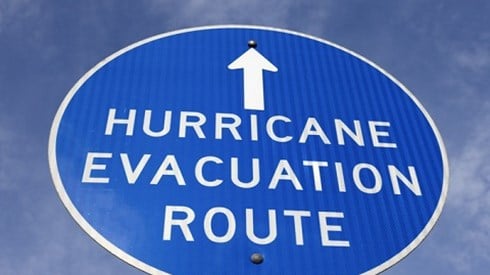2021 Natural Disaster Losses Go Well Beyond Recent Averages

February 07, 2022

An accounting of 2021's natural disasters shows those catastrophes continuing to grow in frequency and severity, as the protection gap between economic and insured losses continues to grow as well.
Global insured catastrophe losses were 76 percent above the 21st century average in 2021 at $130 billion, while total economic losses resulting from those catastrophes were $343 billion, 27 percent above this century's average, according to a new report from Aon. Last year was the fourth in the past five that global insured losses topped $100 billion, the Aon report says.
According to Aon's January 25, 2022, report titled 2021 Weather, Climate, and Catastrophe Insight, both 2021's 50 billion-dollar economic loss events and 20 insured loss events were the fourth-highest totals on record.
The year saw 401 notable disaster events, Aon reports. Of 2021's global insured losses, 71 percent were in the United States. And the difference between the $343 billion in global economic losses and the $130 billion in insured losses reflected a 62 percent "global protection gap," the Aon report says.
The protection gap "highlights the vulnerability of communities and the opportunity for new solutions," the Aon report says.
Many of the kinds of natural disasters seen in 2021 are exacerbated by the impacts of climate change, the Aon report notes.
Natural disasters in 2021 included Hurricane Ida, with $36 billion in insured losses. The storm, which made landfall in August, was the third-costliest hurricane on record for insurers and one of the highest individual losses ever for public and private insurers, Aon says.
Hurricane Ida was one of eight tropical cyclones to make landfall in the United States during 2021, another above-average Atlantic hurricane season, the Aon report notes.
Another $17 billion in insured losses were related to winter weather, the costliest year on record for that peril, according to the Aon report. The United States experienced the costliest winter weather event ever in 2021 following a disruption of the polar vortex that affected much of the country.
Meanwhile, according to the report, a large number of severe convective storms, including a December tornado outbreak and a derecho, contributed to the third-costliest year on record for the US insurance industry, which was also hit by multibillion-dollar fire loss, which included major wildfire events in Colorado and California.
Elsewhere, $13 billion in insured losses resulted from European floods in July, the costliest disaster on record on the continent, Aon says. China experienced extreme flooding as well, according to the Aon report. A typhoon, which the Aon report said was equivalent to a Category 5 hurricane, hit the Philippines in December, while record-setting heat waves led to drought and wildfires in North and South America, Europe, and Asia.
Significant tornados and hailstorms affected Australia, western and central Europe, and Canada, Aon says, while Haiti and Japan experienced earthquakes.
Looking at economic losses resulting from natural disasters in 2021, the year's $343 billion in losses fell well short of breaking records, the Aon report says. Peak economic loss years include 2011 at $615 billion and $532 billion in 2017, according to Aon. Still, 2021's economic losses were well above the 21st century average of $271 billion and the median of $265 billion and were 4 percent higher than the average over the previous decade and 15 percent higher than the median.
"The economic cost solely resulting from weather and climate-related events, which is defined as events caused by atmospheric-driven phenomena, totaled $329 billion," the report says. "This was the third-highest loss on record after adjusting for inflation, only behind 2017 and 2005."
Weather- and climate-related losses in 2021 were 45 percent higher than the 21st century average and 52 percent greater than the median, according to the report, which adds, "Weather/climate-only analysis serves as a starting point when identifying any emerging trends related to the influence of climate change on natural hazard behavior."
The Aon report says an examination of economic losses from natural disasters in 2021 underscored the frequency of large-scale, high-impact events.
Four individual events led to more than $20 billion in economic losses in 2021, Aon says, including Hurricane Ida, July flooding in Europe, summer flooding in China, and the impact of the February polar vortex in North America.
The year marked just the second time in which four $20 billion-plus economic loss events were seen in a single year, Aon says, and it was the first time that four such events were weather/climate related.
The Aon report says flooding—at $105 billion in economic losses—was the costliest peril in 2021 in terms of economic losses. Total losses were driven largely by the flooding events in Europe and China, which together were responsible for more than $75 billion in economic losses, the Aon report says.
Tropical cyclones had the second-greatest economic impact during the year with at least $75 billion in losses in 2021, which became the sixth-costliest tropical cyclone year on record, Aon says.
The 50 individual billion-dollar natural disaster events in 2021 exceeded the 21st century average of 38, with all but three weather- or climate-related events, the Aon report says. The United States experienced 23 such events during the year, the second year in a row with at least 20 such losses and only the third such year on record.
The Aon report notes that the impact of climate change has residual effects beyond immediate property and infrastructure damages. Global supply chains, health care, regulatory risk, and emergency management are among the areas also affected by climate change, according to the report, making it critical that public and private sectors work together to limit future risks.
February 07, 2022



